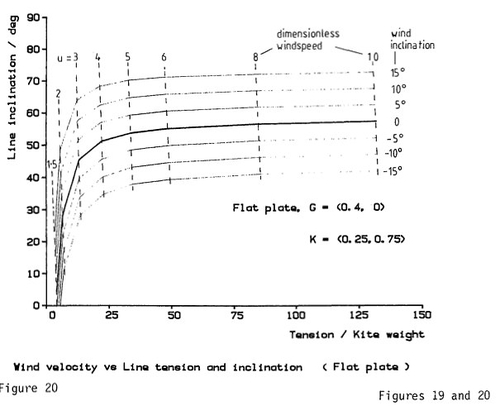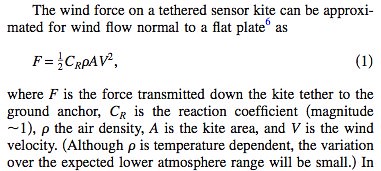using kites as atmospheric wind meters
Archived 4th of March 2018 from Publiclab.org. Kite anemometers on this site, and on Github.
The idea is fairly simple, measure the inclination of the kite line and the tension on the line, and, controlling for the size of the kite, its weight, and the line weight and elasticity, calculate the wind speed. This note includes links to hardware, field tests, and contacts for a defunct manufacturer of gear. A wind speed meter is usually called an Anemometer.
“A good kite anemometer is well suited to measuring wind velocity at heights up to several hundred metres, with an accuracy much better than 1 m s−1 (for averages over several minutes). It can also give an indication of the level of turbulence. The system is fairly simple (especially the most vulnerable part, the kite) allowing a low-cost, robust piece of field equipment.
Ideally, a kite anemometer should have the following properties: a) able to fly steadily in a wide range of windspeeds, b) be reliable and accurate in its measurement of windspeed and direction, c) easily rigged and launched, d) robust, and able to withstand occasional crashes, e) have sufficient lift to reach altitudes of several hundred metres, f) and perhaps enough lift to carry small payloads (up to about 500 g), g) the instrumentation should be robust and portable, and provide outputs in convenient formats and units.” From page 136, Stephen E. Hobbs, A Quantitative Study of Kite Performance in Natural Wind with Application to Kite Anemometry, Cranfield Institute of Technology, Ecological Physics Research Group, PhD Thesis, 1986
A Kite Anemometer is sometimes called a TALA, Tethered Aerodynamic Lifting Anemometer. In the 70’s and 80’s a commercial TALA, made by TALA inc or Approach Fish Inc., was sold. One of their principals, Stephen Keel, lists his e-mail here

